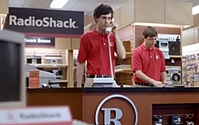Commentary
The Super Bowl Conundrum Of Tying TV Ads To The Web
- by Laurie Sullivan , Staff Writer @lauriesullivan, February 13, 2014

Type in a URL or click on a link that takes you to a Web page, but the load time takes too darn long, so you close the browser window and try again. This may occur less frequently these days, but it happened to Coca-Cola, Dannon Oikos, Budweiser, Cheerios and RadioShack during the last Super Bowl. The television ads drove an increase in traffic to their respective Web sites following the game, but the sites couldn't support the weight.
Research from Monitis, which monitors Web site load times, shows that each of these companies experienced Web site load issues due to an increase in online traffic after the Super Bowl XLVIII. It has become more important for creative teams that develop the ads to communicate with the folks managing the company's Web sites to determine the increase in Web page traffic. With more consumers sitting in front of the television and accessing the Web through a portable screen, companies need to consider the support online strategies need, especially when running television ads.
Both Coca-Cola and Dannon Oikos showed significant Web site performance issues going over the critical 500 AVG threshold -- the response time it takes a Web page to load. Coca-Cola's, Dannon Oikos', Budweiser's, Cheerios' and RadioShack's Web sites showed weakness in terms of their full-page load values. As a rule, the AVG-value should remain below 500 ms. Coca-Cola was 1224.75; and Dannon, 531.34. The average response time for each Web site to load was measured in milliseconds (ms).
Monitis attributes Coca-Cola's slow Web site loading time to its "America Is Beautiful" campaign that sparked controversy across a variety of social channels. Coca-Cola's Web site even had issues throughout the entire testing period. None of the monitored Web sites loaded the Web page within four seconds.
Measuring the performance of each Web page has become critical, especially when brands want to drive consumers from television ads to their Web site, but that's only a portion of managing Web page load times. Webmasters can apply different techniques to optimize the load times of images and other larger files, including compression, merging images, splitting them between nodes, and use content delivery networks, explains Mikayel Vardanyan, director of operations at Monitis.
Monitis began monitoring the Web sites of the selected brands after the Super Bowl, based on the assumption that most viewers were busy watching the game during the event. The effect of the commercials on each Web site was not seen until after the game. The results were collected by a New York-based server.



